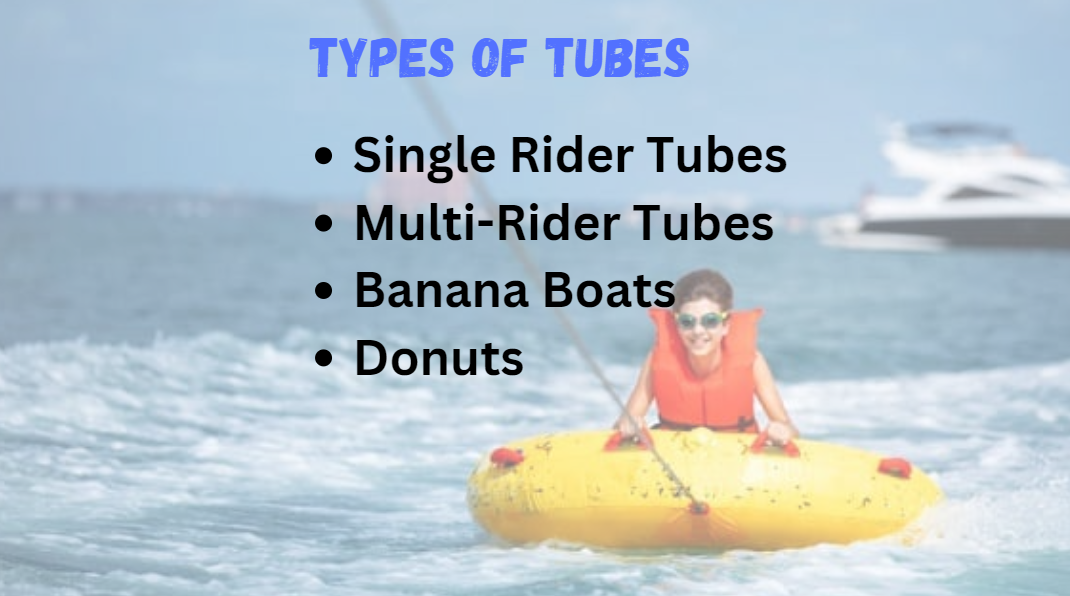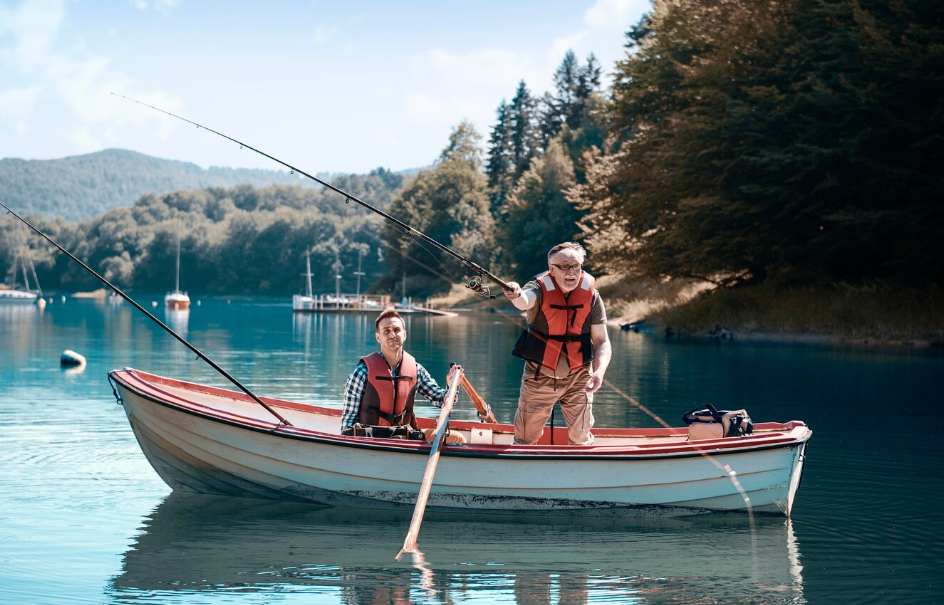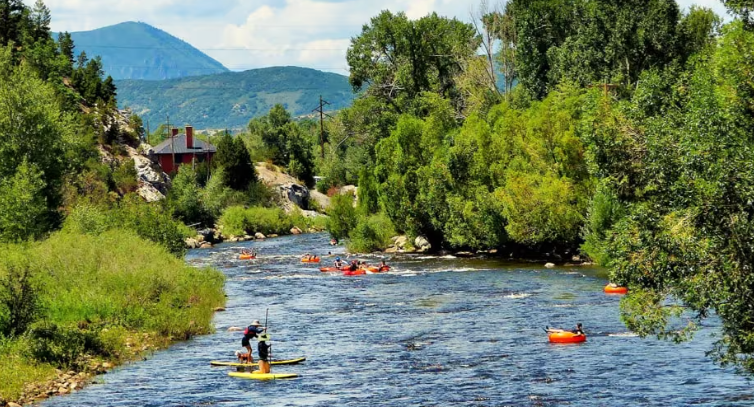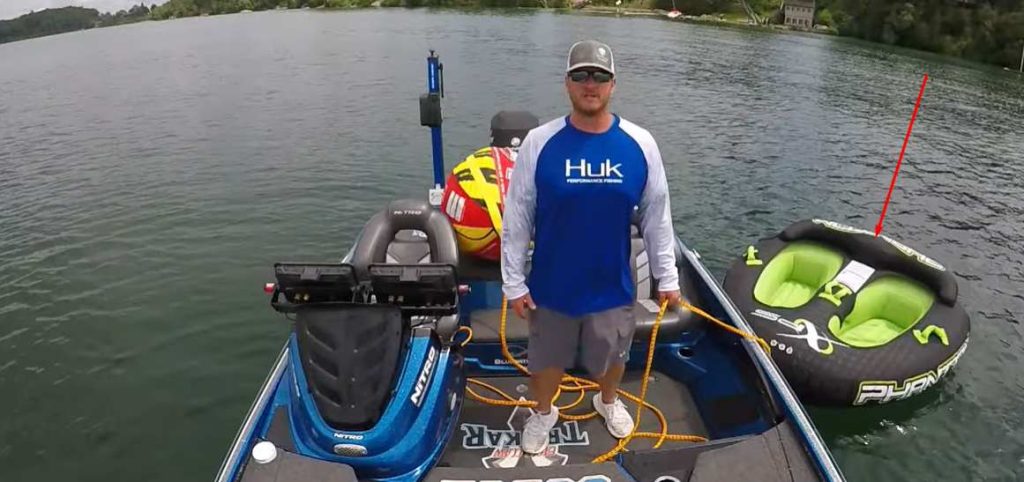Yes, a fishing boat can pull a tube if it has sufficient horsepower and is equipped for towing. Safety precautions and local regulations must be followed during such activities.
Pulling a tube with a fishing boat can provide an exhilarating experience on the water, blending the serenity of angling with the thrill of water sports. Fishing boats, typically designed for stability and smooth navigation, are not the conventional choice for towing; many are robust enough to handle this fun addition to a day on the lake or sea. Let’s check Can a Fishing Boat Pull a Tube?

It’s essential to ensure the boat has enough power, usually a minimum of around 40 horsepower, and that the boat’s structure can support a tow rope attachment. Always prioritize safety by checking that all gear and safety equipment are up to snuff, and be mindful of all passengers and other water users. Embracing this dual-purpose approach to your fishing boat can dramatically increase the enjoyment for family and friends eager for a dash of adventure on the waves.
Understanding Tube Pulling
Adrenaline-filled water activities like tube pulling have become increasingly popular, drawing in thrill-seekers and water sports enthusiasts alike. But can a fishing boat handle the unique challenge of pulling a tube? The answer lies in the boat’s power, weight capacity, and the right setup.
A fishing boat with sufficient horsepower can transform into a hub of aquatic entertainment. To ensure safety and Increase fun, understanding the kinds of tubes available and the necessary equipment is essential.
Types Of Tubes

- Single Rider Tubes: Designed for solo enjoyment, these are perfect for those who crave high-speed excitement on the water.
- Multi-Rider Tubes: Built to accommodate groups, these tubes can create a fun, social outing on the water.
- Banana Boats: These elongated, multi-seat tubes rock along the water, making for a wild, collective adventure.
- Donuts: A timeless classic, donut-shaped tubes offer a gripping ride and a splash of nostalgia.
Equipment Needed
With the right equipment, even a humble fishing vessel can become a center of exhilarating water sports. The following gear customizes a boat for successful tube pulling:
- Tow Rope: It should be strong and stretch-resistant, designed for the weight and stress of tubing. The ideal length varies from 50 to 65 feet, depending on the boat’s size and the desired experience.
- Towing Harness: Necessary if the boat lacks a ski pylon or tow eye, the harness ensures secure rope attachment.
- Quick Release Mechanism: Adds safety layer, allowing for immediate disconnection in case of emergency.
- Life Vests: A must-have for all riders, providing safety and buoyancy during the ride.
- Pump: Essential for inflating tubes to the correct pressure for optimal performance and rider safety.
Fishing Boat Suitability
Selecting the appropriate fishing boat for water recreation involves considering towing capacity. Certain models feature the power and design necessary to pull a tube, blending angling with fun water sports.

Engine Power
- Less than 70 HP – Typically unsuitable for tubing, as these engines might struggle to generate enough pull.
- 70 to 150 HP – Considered marginal; could pull a tube depending on the boat’s weight and design.
- More than 150 HP – Usually suitable for tubing with adequate towing power.
Consult the boat’s manual or manufacturer for specific recommendations concerning towing capabilities.
Considerations For Safety
Fishing boats, when used for tubing, require extra safety considerations. Beyond engine capabilities, look at:
| Feature | Safety Implication |
|---|---|
| Weight Distribution | Ensure the boat remains balanced to prevent capsizing. |
| Towing Setup | A proper towing harness and attachment point are crucial for control. |
| Tow Rope Length | Follow guidelines to keep the tube at a safe distance from the boat. |
| Spotter | Always have an individual keeping watch over the people being towed. |
Follow all boating laws and guidelines, including the use of life jackets and understanding hand signals for communication between the tube rider and the boat operator. Conducting a safety check before setting off is not just recommended; it’s a necessity for ensuring an enjoyable and secure experience on the water.
Preparing For Tubing

Before the thrill of water tubing behind a fishing boat begins, it’s essential to prepare with safety and proper setup in mind. Understanding how to correctly prepare for tubing is not only a matter of enjoyment but primarily of safety. From safety precautions to weight distribution, let’s Plunge into the essentials of getting your fishing boat ready to pull a tube with excitement and peace of mind.
Safety Precautions
- Check that life jackets are available for all participants and fit appropriately. Life jackets are non-negotiable for all ages and swimming abilities.
- Inspect the tube, tow rope, and attachments for any signs of wear or damage. A broken line or inefficient valve could lead to accidents.
- Ensure the driver is familiar with the boat, tube towing, and local water rules. A responsible operator is key to a risk-free adventure.
- Have a spotter, separate from the boat driver, to keep an eye on the tuber and communicate with hand signals.
- Review safety guidelines and hand signals with all riders.
Weight Distribution
- Balance the boat by evenly distributing gear and passengers. An unbalanced boat can lead to inefficient towing and possible capsizing.
- Place heavier items—and passengers—toward the boat’s center, maintaining stability.
- Adjust the tube’s position in the water to avoid submergence or excessive spray.
- Test the boat’s performance and handling before tube attachment. A trial run can reveal necessary adjustments for weight and balance.
Tips For Tubing With A Fishing Boat
Many fishing boats have the power and stability to safely pull a tube, providing an extra splash of fun on the water. Always ensure the boat and engine capacity align with tubing safety guidelines for an exhilarating, yet secure, adventure.

Speed Recommendations
- Start Slow: Begin towing at a slow pace to let the rider adapt and signal if they’re ready for more speed.
- Observe the Tube: Watch how the tube reacts to different speeds—bouncing excessively may indicate you need to slow down.
- Communication is Key: Establish clear signals with the rider to adjust the speed as necessary.
Maneuvering Techniques
Maneuvering a fishing boat while tubing requires finesse and understanding your boat’s capabilities. Capture the perfect balance of fun and safety with these techniques:
- Gentle Turns: Practice making smooth, wide turns — sharp turns can cause the tube to swing out unpredictably.
- Steady Course: Keep a straight, consistent path as much as possible to ensure stability for the tuber.
- Avoid Other Boats: Maintain a safe distance from other boats, swimmers, and obstacles.
Use these tips to transform a leisurely fishing trip into an exciting tubing excursion that all ages can enjoy, with the bonus of the calm and quiet that a fishing boat offers. Remember, always prioritize safety, and you’ll be set for an unforgettable day on the water.
Conclusion And Recommendations
Commencing on the adventure of tubing behind a fishing boat can be exhilarating, yet it’s essential to anchor the experience with strong safety standards and informed practices. In wrapping up our exploration, we’ve distilled some crucial takeaways to ensure that the thrill remains hand-in-hand with wellbeing. Here are our conclusive insights and actionable strategies to Increase joy and minimize risk on the water.
Summary Of Safety Measures
- Life vests for all participants: Ensure everyone has a properly fitted, coast-guard-approved flotation device.
- Adequate boat power: Confirm the boat’s horsepower can handle the additional load of towing a tube.
- Spotter and communication: Always have a designated spotter to watch the tuber and use pre-established hand signals.
- Weather and water conditions: Review and abide by the forecast, steering clear of adverse weather and rough waters.
- Speed regulations: Maintain a consistent, appropriate speed suited to the age and skill level of the tuber.
- Tube condition and capacity: Regularly inspect the tube for wear and never exceed its weight limit.
Recommendations For A Successful Experience
- Equip the boat with the right gear: A robust tow rope, quick-release mechanisms, and a powerful engine are key.
- Plan your route: Stay in designated tubing areas, free from obstructions, and away from crowded fishing spots or swimming zones.
- Proper briefing: Ensure the tuber is briefed about the activity, knows how to signal, and understands what to do if they fall off.
- Practice makes perfect: Start with dry runs and low speeds to give beginners a feel for the tube.
- Keep it fun, not frantic: Prioritize enjoyment over intensity—a leisurely ride can be as delightful as a fast-paced one.
Frequently Asked Questions Can A Fishing Boat Pull A Tube
Can You Pull A Tube With Any Boat/Can a Fishing Boat Pull a Tube?
When it comes to tubing behind a boat, the right vessel matters. The question isn’t just “Can you pull a tube with any boat?” but rather ” What boat do you use for tubing? ” Understanding the dynamics is key.
Not every boat is cut out for towing a tube safely. Factors like boat size, engine power, and design play crucial roles. For instance, a powerful speedboat might seem ideal, but even a jon boat can do the job if equipped appropriately.
Safety should never take a back seat. Proper towing is vital – it’s not just about the boat, but about technique too. The “barbell pattern” is a great method, allowing for straight-line driving, controlled turns, and a smooth experience for riders.
Considering gear like the Sportsstuff Super Mable Towable or Zup Duo Towable Tube improves the fun but requires proper attachment, especially if your boat lacks a tow bar. Safety precautions, like avoiding sharp turns and maintaining awareness of surroundings, are crucial to prevent accidents.
In essence, while many boats can tow a tube, it’s essential to prioritize safety, technique, and suitable equipment for a thrilling yet secure tubing experience.
Can You Go Tubing On A Bass Boat?
Yes, you can go tubing from a bass boat, provided the boat has enough horsepower and is equipped for towing. Always prioritize safety by adhering to water sports guidelines and wearing life jackets.
How Fast Does A Boat Need To Go To Pull A Tube?
A boat must typically travel at a speed between 15 to 25 mph to effectively pull a tube. This speed range ensures safety and enjoyment for passengers.
How Do You Attach A Tube To A Bass Boat?
To attach a tube to a bass boat, secure the tow rope to the boat’s stern cleat or towing point. Ensure the connection is tight and the tube’s air chambers are fully inflated before use. Always follow the manufacturer’s guidelines for safety.
Conclusion
As we’ve explored, fishing boats can indeed pull a tube, offering added fun on the water. Always prioritize safety and check the boat’s specifications. Give it a try and transform your fishing trip into a thrilling aquatic adventure. Enfold the waves and enjoy the ride!

